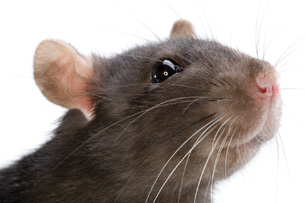Module 6
1. Module 6
1.9. Page 2
Module 6—Mendelian Genetics: The Transmission of Traits to the Next Generation
 Explore
Explore
 Read
Read
Recall that Mendel worked with seven contrasting traits. Each trait was controlled by a single gene, and each gene had two alternate forms known as alleles. These alleles related to each other as either dominant or recessive. Dominant alleles are always expressed, and show up in the phenotype of either homozygous dominant or heterozygous individuals. Recessive phenotypes can only be displayed when there are only copies of recessive alleles present, that is, only in homozygous recessive individuals.
In working with genetic problems, it is very important to understand how alleles move, and how they are expressed. Mendel’s first law, the law of segregation, states that each allele pair in the parents is separated in the creation of gametes. This separation is random. Further, these gametes unite with other gametes in an equally random way. This ensures that all possible combinations of gametes will show up in the offspring. Geneticists use a Punnett square to study how traits are distributed. Read about how to represent alleles properly, and then how to create and use Punnett squares on pages 589 and 590 of your textbook. This is an essential skill in your study of genetics. Choose how you will record this information in your course folder.
 Watch and Listen
Watch and Listen
Continue watching the video “Classical Genetics and Monohybrid Crosses” from the section “Bio Challenge: Round vs. Wrinkled Peas" to the end. Answer the following questions for your own understanding. Discuss your responses with your teacher and file them in your course folder.
TR 1. Explain Mendel’s first law in your own words.
TR 2. What does a Punnett square tell you in a cross?
TR 3. Given two heterozygous parents for pea type (Rr), what are the phenotypic and genotypic ratios expected in the offspring?
TR 4. What does a test cross help determine?
test cross: a cross done to determine the genotype of an individual with a dominant phenotype; the individual with the unknown genotype is mated with a homozygous recessive individual—if any offspring have the recessive phenotype, the unknown is a heterozygote
 Try This
Try This
TR 5. Examine the sample on how to build a Punnett square on the bottom of page 590 of your textbook. Notice that the allele of the gamete of one parent is recorded along the top of the Punnett square, and the allele of the gamete of the other parent down the side. This way, the square can be filled in by carrying the appropriate allele letter across or down as shown. Each square then represents a possible combination of alleles in the zygote after fertilization.
Using this as a guide, answer Practice Problem 1 on the bottom of page 591. Create a Punnett square to illustrate the parental cross, and another one to illustrate the F1 cross and the resulting F2 generation. Consult with your teacher to clarify your answer and store your work in your course folder.
 Watch and Listen
Watch and Listen
You may wish to review the video “Classical Genetics and Monohybrid Crosses” about Mendel’s discoveries. Note the following sections:
- “Bio Fact: Test Cross”
- “Bio Report: Analysis of Cross”
To test your understanding, answer the following questions and save your answers in your course folder.
TR 6. Did any of Mendel’s traits blend in the offspring?
TR 7. What is the F2 ratio of dominant to recessive phenotypes in all of Mendel’s traits?
TR 8. What are the phenotypic ratios for a test cross if the test plant is heterozygous? If it is homozygous?
 Module 6: Lesson 2 Assignment—Lab
Module 6: Lesson 2 Assignment—Lab

© Oleg Kozlov, Sophy Kozlova/shutterstock
Crossing pure breeding plants or animals with contrasting traits or phenotypes can help demonstrate how dominant and recessive genes work. In this lab you will explore the possible outcomes when parents with contrasting phenotypes for one trait are bred. The lab activity involves completion of a Gizmo on Mouse Genetics (One Trait) and all of the activities indicated in the lab. You will be prompted to complete the Module 6: Lesson 2 Assignment in the lab.